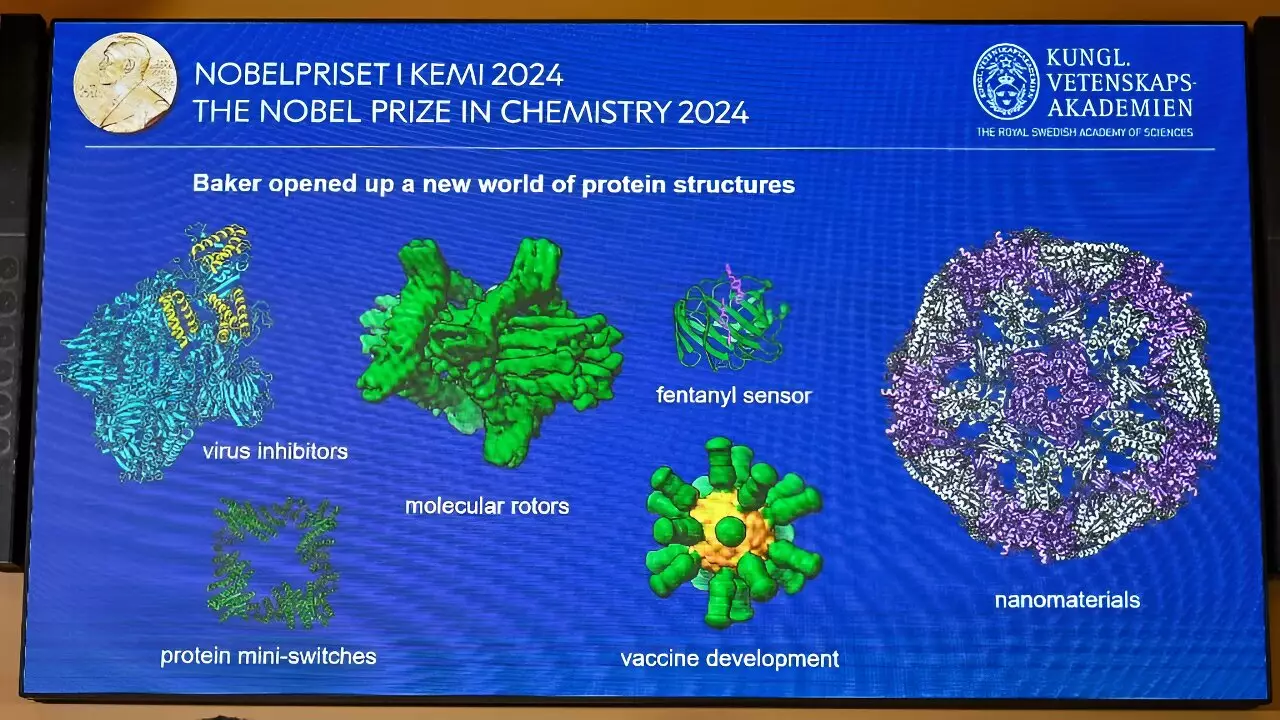On October 9, 2024, the scientific community celebrated a remarkable milestone with the awarding of the Nobel Prize in Chemistry to three pioneering researchers—Demis Hassabis and John Jumper from Google DeepMind, alongside biochemist David Baker. Their groundbreaking work has significantly advanced our understanding of proteins, the essential molecules that play a crucial role in sustaining life. By harnessing the power of artificial intelligence and innovative design techniques, these scientists have paved the way for exciting future applications, including potential breakthroughs in drug development and environmental remediation.
Proteins are often described as the workhorses of biological systems; they are responsible for nearly every function within a living organism. Each protein is composed of a unique arrangement of 20 different amino acids, and the specific order of these amino acids dictates the protein’s three-dimensional structure and function. The complexity of protein folding has long posed a challenge to scientists, as understanding how these linear sequences translate into functional shapes is key to unlocking numerous biological processes.
To draw an analogy familiar to many, the relationship between a protein’s amino acid sequence and its structure can be likened to a tangled telephone cord. When stretched, the cord appears linear (a two-dimensional structure), yet once released, it coils back into its intricate three-dimensional form. This representation helps visualize why it has been a daunting task for chemists and biochemists to translate sequences into functional proteins.
For decades, scientists have grappled with the challenge of predicting protein structures from their amino acid sequences. Various methodologies and approaches have been employed, yet the biological complexity remained largely elusive. The determination of protein structures is paramount, as it directly influences the ability to manipulate proteins for various applications, from medicine to materials science. While previous Nobel laureates had demonstrated that predictions could be made, the practical execution of these predictions was fraught with difficulties.
As the quest to understand protein structure progressed, initiatives such as the “Protein Olympics” were established—competitions aimed at pushing the boundaries of our predictive capabilities. Unfortunately, despite substantial effort, many participants struggled to provide accurate predictions, highlighting the inherent complexity of the task at hand.
Enter Demis Hassabis and John Jumper with their innovative AI model, AlphaFold. By training this sophisticated computational tool on vast datasets of known protein sequences and their corresponding structures, they formulated a method to decipher the three-dimensional configurations of unknown sequences. This marks a pivotal advancement, as AlphaFold has now predicted the structures of nearly all 200 million proteins cataloged on Earth, fundamentally shifting the landscape of protein research.
AlphaFold’s success was solidified during the 2020 Protein Olympics; its performance was so outstanding that it prompted organizers to declare the problem effectively solved. The implications of this achievement extend beyond basic science, offering a plethora of potential applications, including rapid vaccine development and more effective drug design.
Complementing the work of Hassabis and Jumper, David Baker’s contributions focus on the design of entirely new proteins that do not exist in nature. Utilizing his computer program, Rosetta, Baker navigated through known protein structures to create unprecedented configurations. This method involved analyzing available protein fragments, modifying them, and proposing new sequences that would ultimately lend themselves to the intended structure.
This innovative approach unlocks numerous possibilities for biotechnology. Baker highlights the potential of proteins designed during significant global health crises, such as his creation aimed at combating the coronavirus. His enthusiasm for the future capabilities of designed proteins speaks volumes about the potential transformational impact on health and disease management.
The implications of these research breakthroughs are monumental. By deepening our understanding of protein functionality, scientists can address pressing global challenges—from developing novel antibiotics to combating climate change through sustainable biochemical processes. This research could transform various sectors, including healthcare and environmental science, presenting exciting opportunities for innovation.
As we stand on the brink of a new era in protein science, researchers like Baker, Hassabis, and Jumper are at the forefront, ushering in transformative advancements that promise to enhance our understanding of life’s complex mechanisms and contribute to resolving issues facing humanity.
The 2024 Nobel Prize in Chemistry not only recognizes extraordinary scientific accomplishments but also signals a profound shift in our capabilities to manipulate and design proteins. As Davide Calebiro aptly noted, we are indeed witnessing the dawn of a transformative revolution in protein research.


Leave a Reply